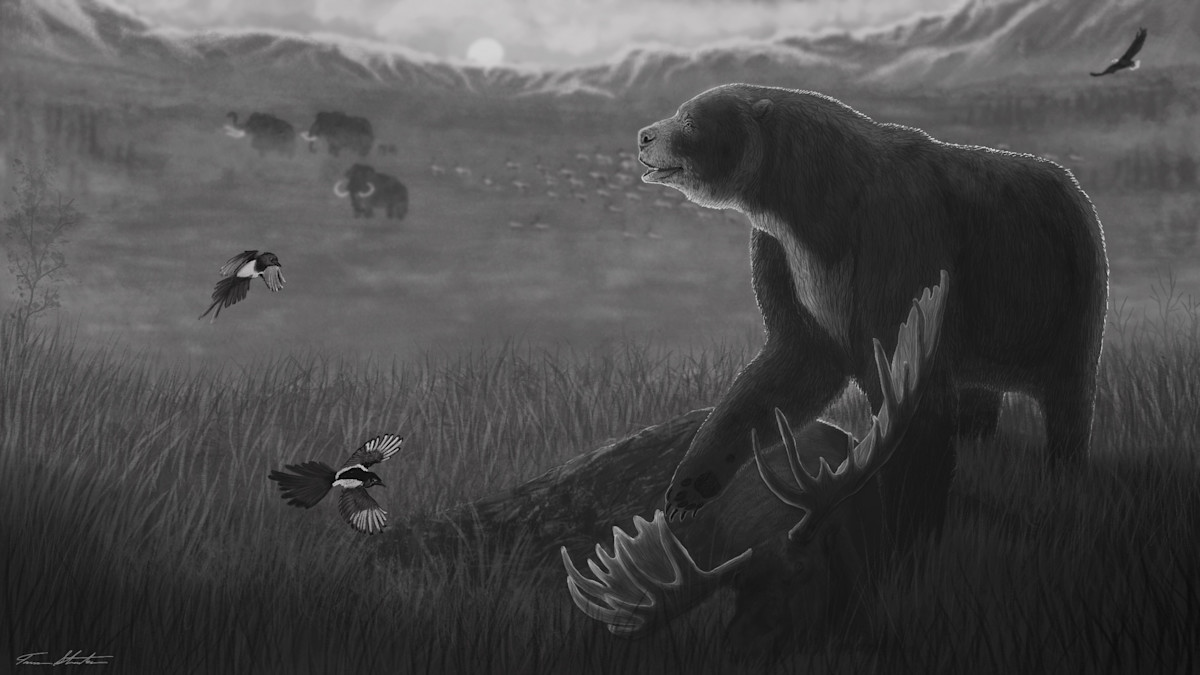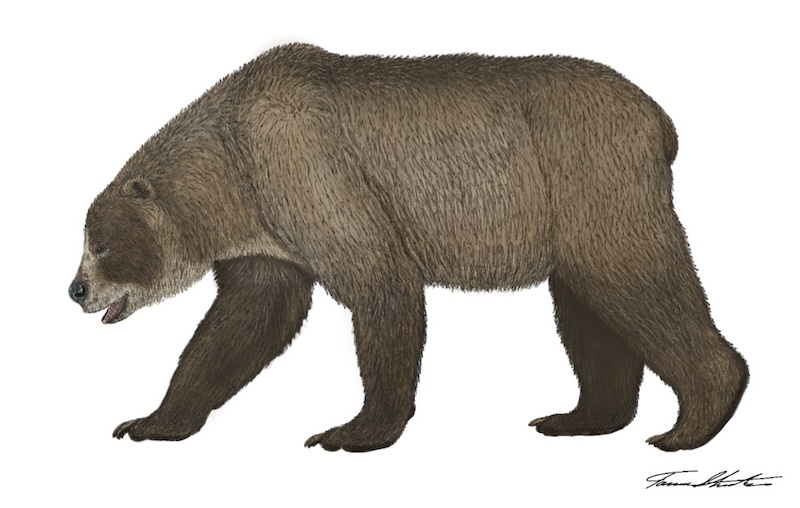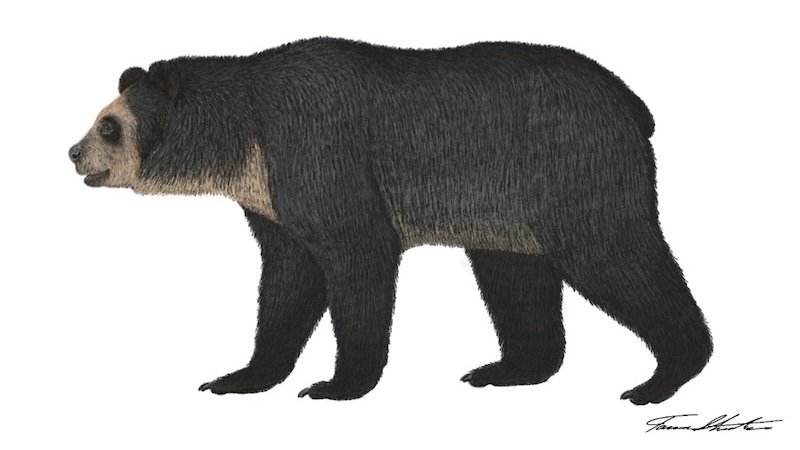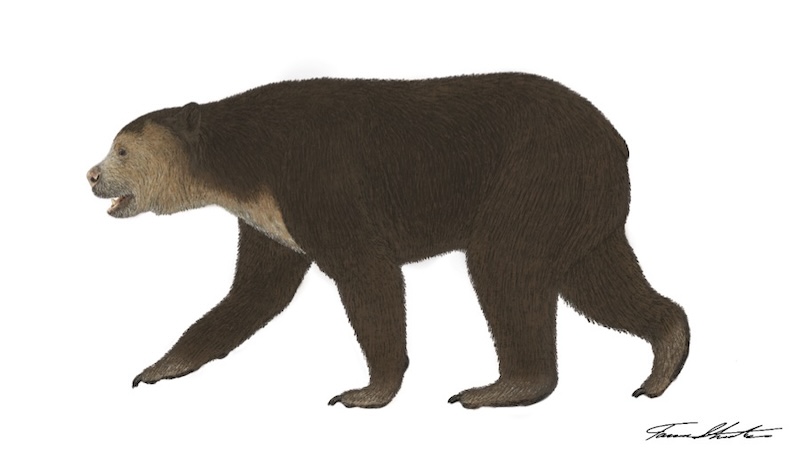
The bears of modern-day North America are arguably some of our most charismatic megafauna. They strike awe in the eyes of many and are reminiscent of a wilder time.
If you venture a bit further back in time, to when the very first Homo sapiens were crossing the Bering Strait some 14,000 years ago, the diversity of Urisids was far greater. Here are a few of the giants we once walked the earth with and the stories behind their disappearance.

Arctodus simus: The Giant Short-Faced Bear No conversation regarding the extinct bears of North America can begin without first addressing this behemoth. One of the largest bears of all time, it was a formidable predator weighing up to 2,200 pounds (larger than all modern brown bears and almost all polar bears). When reared up on its hind legs, it would have been 12 feet tall.
For perspective, the largest Kodiak brown bear in history only reached 10 feet tall. From Alaska to Central Mexico, this giant would have roamed the North American landscape for some 1.8 million years. In fact, Arctodus was so successful that it’s thought that brown bears were unable to spread into most of North America until after the extinction of their larger, distant cousin.
Even though we have a considerable amount of fossil material surrounding this species, largely due to the 30 uncovered at the La Brea Tar pits, we are still learning so much about their ecology and, ultimately, why they went extinct.
For instance, though it was long considered to be an obligate carnivore like a big cat or canid due to their huge size, bone-crushing jaws, and long legs adapted for running, it’s now predicted that it was more similar to modern brown bears, in that it had an omnivorous diet.
Whilst it did sometimes actively hunt young megafauna like ancient bison, horses, camels, and tapirs, they also scavenged off kills made by Smilodon, dire wolves, and American lions. However, most of its diet likely came from nuts, berries, tubers, and soft vegetation. It may have even consumed salmon in large amounts like coastal brown and black bears do today.
Although it boasts the common name of “giant short-faced bear,” the notion of it being “short-faced” isn’t quite accurate. Rather, the broadness of the muzzle and the wide jaw bones, used to accommodate powerful muscles, made it seem shorter in the face than modern brown bears.
What we do know for certain is that this bear, along with the majority of North America’s prehistoric megafauna, disappeared from the planet in the early Holocene, with the last fossil of Arctodus simus being found in a Texas Cave dated to 12,800 years ago. Numerous theories, such as the disappearance of the megafauna it ate, the declining nutritional quality of plants during climate changes, and the appearance of humans in North America.
Humans, in particular, are thought to have disrupted their major food sources and killed bears directly on occasion, which would have been detrimental to a species with an already low population and little genetic diversity.

Tremarctos floridanus: Florida Spectacled Bear The Florida spectacled bear, otherwise known as the Florida cave bear, belonged to the same general family (Tremarctinae) as its larger counterpart, Arctodus simus, of which it shared much of its range, but was substantially smaller. Still a big bear, it would have weighed upwards of 750 pounds, as much as an inland grizzly, but with proportionally longer legs and a slightly shorter snout. They proliferated in what is today the South-Eastern US, in states like Florida (hence its namesake), Tennessee, Alabama, and up to South Carolina.
It's a very close relative and possible ancestor to the modern spectacled bear, the only bear of South American origins and the only bear of the Tremarctinae family to survive into modern times. From an ecological perspective, they would have been very similar, consuming a diet of mostly plant matter mixed in with insects, small birds, eggs, reptiles, and very small amounts of meat. This diet would have been perfectly suited to the American southeast of the Pleistocene, with open oak-woodland savannahs providing large amounts of nuts, fruits, and seeds.
The reasons behind the extinction of this bear are largely unknown, but three main factors are thought to have been at play. Firstly, a changing climate would have disturbed the production of some of those calorie-dense food sources, but also incoming humans would have been a factor. But what probably played a major role in the decline of the Florida spectacled bear was the adaptability of Urus americanus, the modern black bear. This smaller bear was better able to cope with the new competitor (humans), and also had a more flexible diet due to its ability to consume more animal foods. What we do know is that Florida spectacled bears disappeared around 8,000 years ago in Devil’s Den Cave in Florida.

Acrotherium wingei: South American Short Faced Bear Despite the name, Arctotherium—indicating a typically South American-dwelling genus—these bears ventured north into central Mexico, specifically the Yucatan Peninsula of modern-day Mexico, by the end of the Pleistocene. This particular subspecies, A. wingei, was a relatively small bear, weighing around 200 to 300 pounds, and would have likely had a mostly herbivorous diet, much like the modern spectacled bear. It was the last and smallest member of its genus, the end of a million-year-long lineage that gradually decreased in size, disappearing altogether at the end of the Pleistocene.
A. wingei’s ancestors though were some of the largest mammalian carnivores ever to walk the earth. During the middle Pleistocene, the 1.7-ton and 14-foot tall Arctotherium angustidens terrorized the landscape of Central South America, dwarfing even the giant short-faced bear. This was a bear so large that there’s evidence that it actively predated on ground sloths, gomphotheres, toxodons, and South American horses and camelids. But as other Pleistocene predators like Smilodon, giant jaguars, and dire wolves became more abundant, this giant bear gradually shrank and, by the end of the Pleistocene, switched to a mostly herbivorous diet, supplemented by carrion and neonates.
The disappearance of A. Wingei from its North and South American range is likely due to a mix of climate change, competition from surviving jaguars and pumas, and also the appearance of humans on the continent. Humans likely hunted this species while also pushing it out of the specific habitats it required to thrive. So by around 9,000 years ago, this species to disappeared from the planet.
The Adaptable Avoid Extinction The story of extinct bears in North America is largely a replacement of the once-dominant Tremarctinae family by the modern Ursus bears, such as the brown, polar, and black bears we encounter today. The cause of this was largely due to one key factor: adaptability.
Much like the North American cervids that outlived their Pleistocene counterparts, the modern black and brown bears were more adaptable and able to co-exist with the newly arrived humans because their habitat and dietary requirements were so broad. Only the tiny spectacled bear survives to this day, largely because it was adaptable enough.
It’s an attribute that black and brown bears still exhibit today. Despite being the two largest predators on the continent, they excel in living in a range of habitats, and particularly with black bears, thrive in human-altered landscapes. So next time you’re out in the field pursuing your next serving of bear meat, think of those mega-bears from a gone-by time that pathed the way for the Urisids we have today.
All images via Tanner Streeter.





